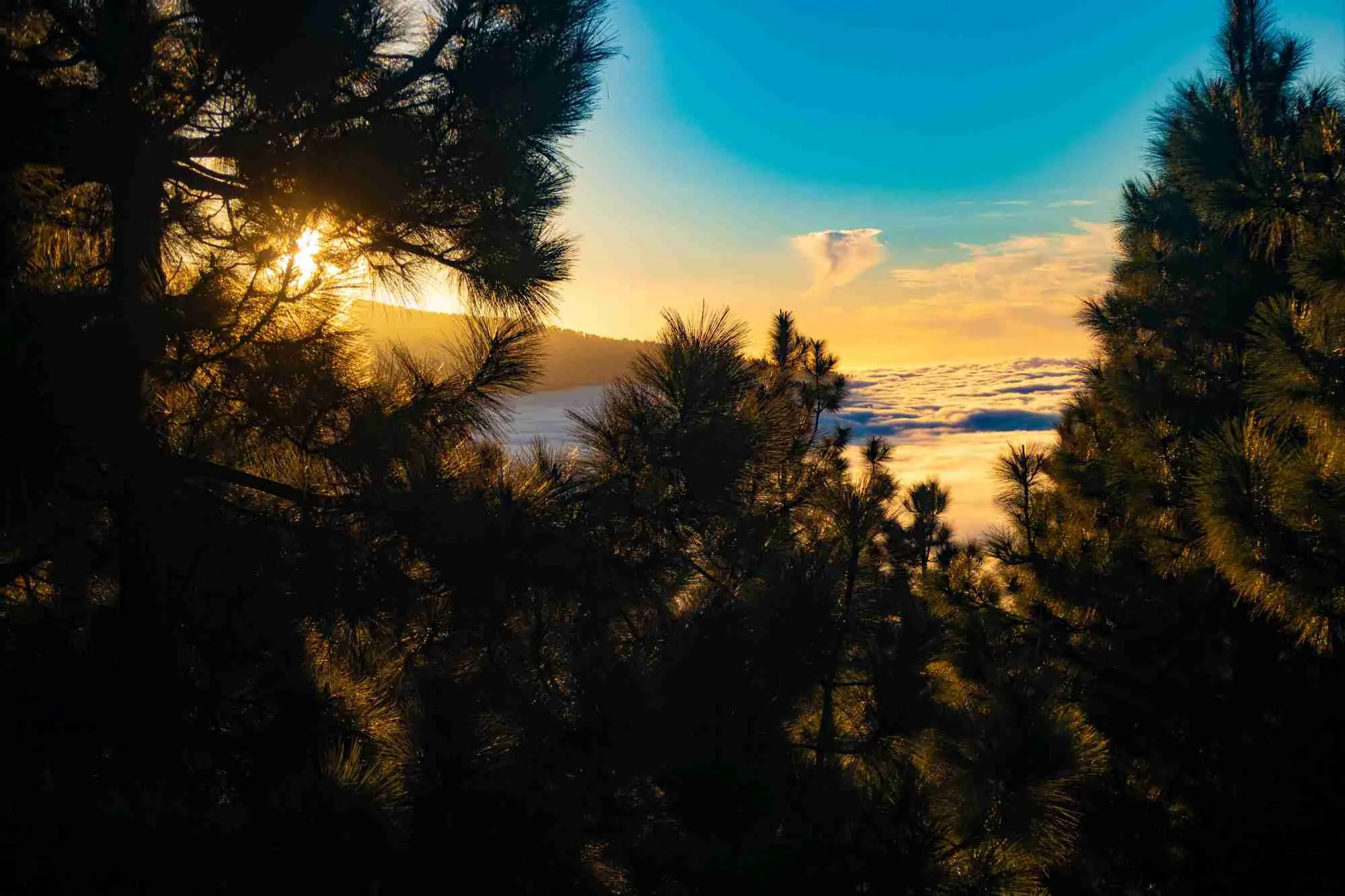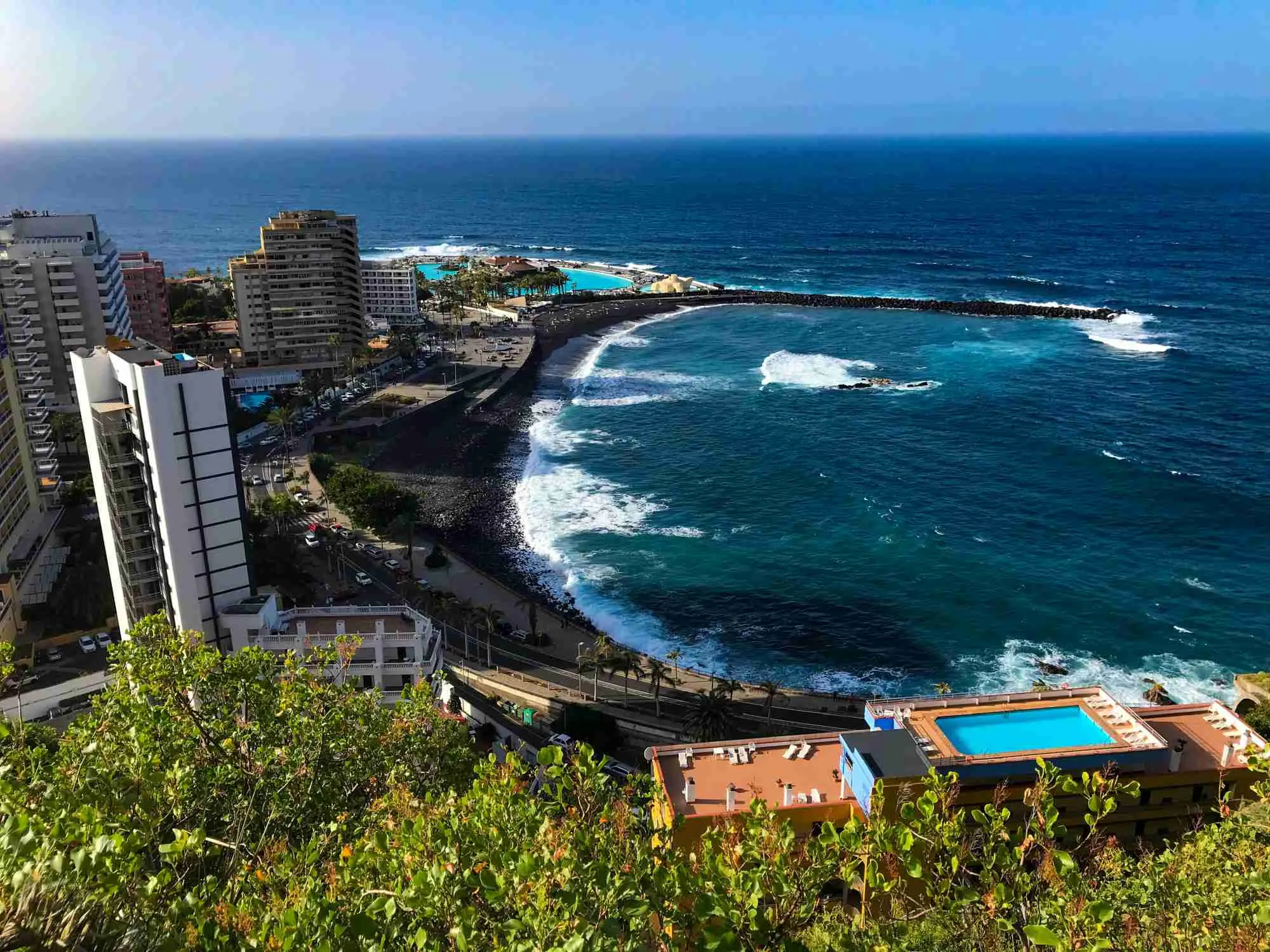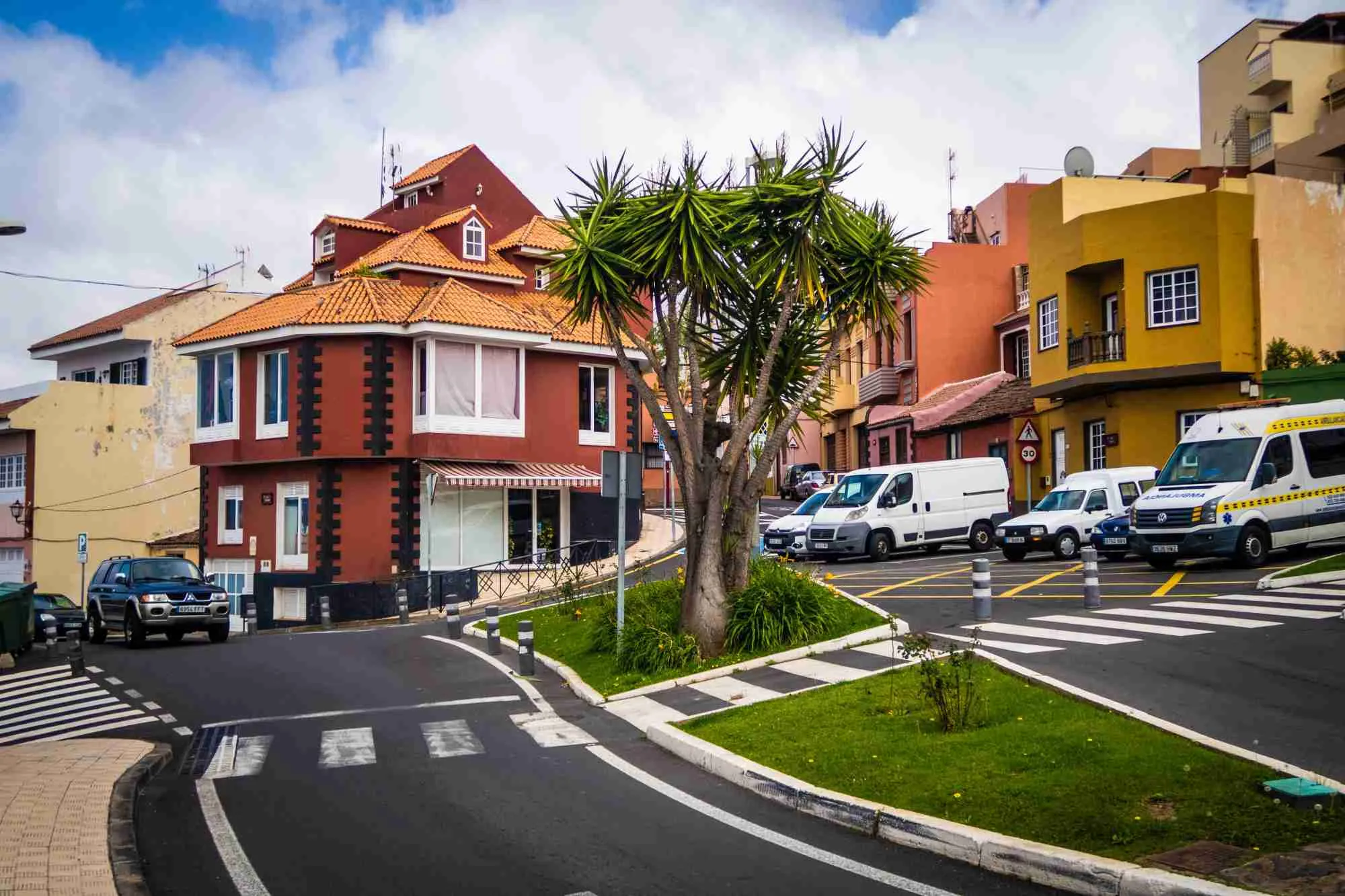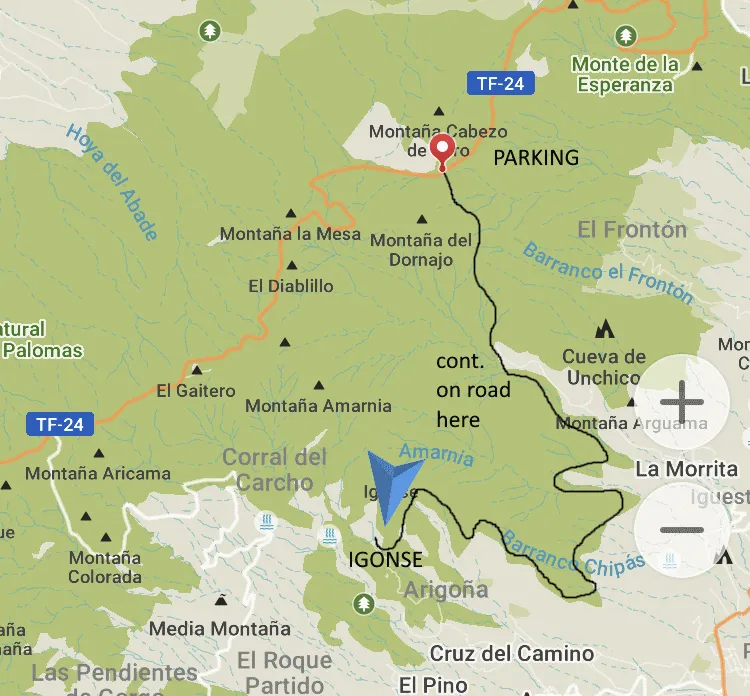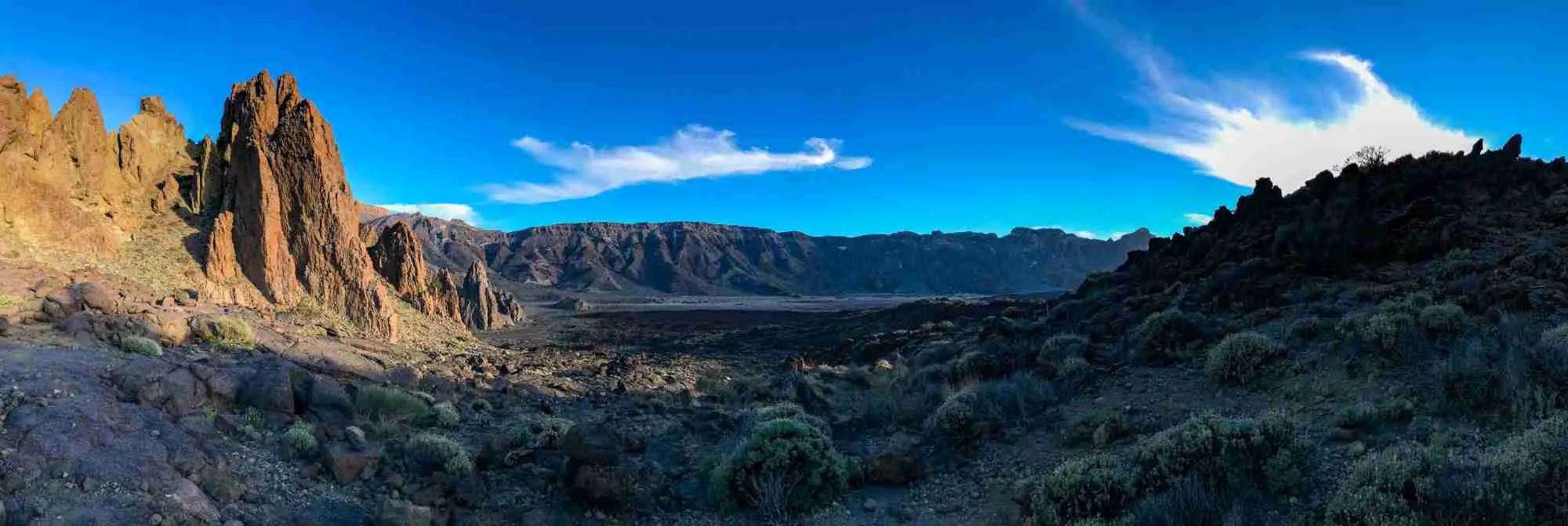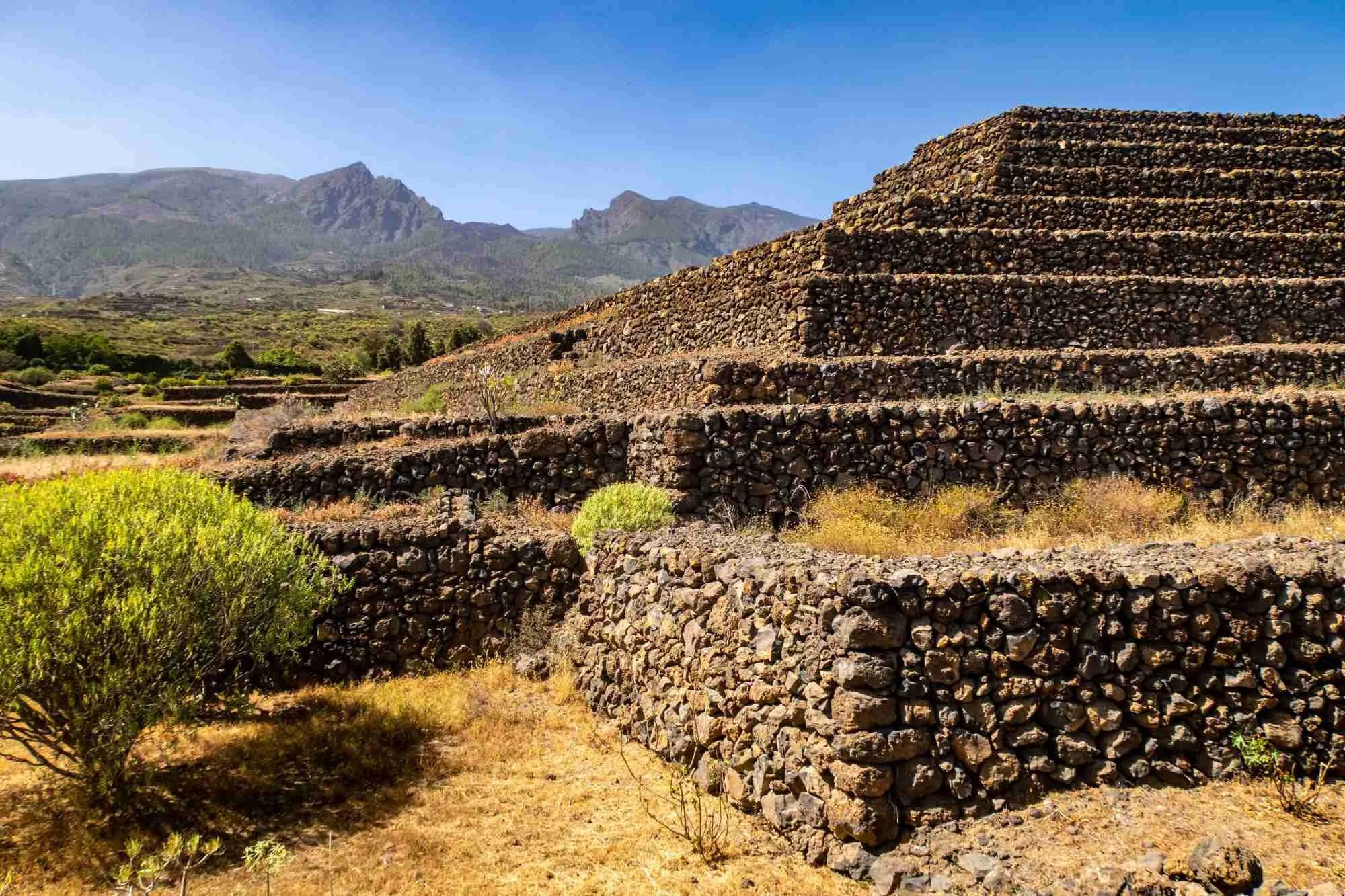At the beginning of 2019 I flew to the Canary Island to join a co-living house in the north of the island. Winter was still in full effect in Vienna and I had to escape once again. Looking back I had booked for a month and just kept extending. This gave me the opportunity to explore three different parts of the island.
See more and higher resolution picture on my Flickr.
Tenerife in 3 Acts: North, South and Teide
The central piece of the island is the volcano Teide. In general a lot of life on the island centers around this now dormant giant. It’s the highest mountain in Spain and the third largest volcanic structure on earth (measured from the ocean floor). It’s only dwarfed by the Hawaiian counterparts. The last eruption was in 1909 in El Chinyero. “Teide is considered structurally unstable and its northern flank has a distinctive bulge.” (Wikipedia)
Due to this gentle giant there are two distinct climate zones on Tenerife. The north is generally a lot cloudier and damper. Clouds coming in from the Atlantic Ocean get stuck on the north flank of Teide. If there is no wind they stay for hours and if you drive up the mountain you are treated to a vast ocean of clouds.
The south is where you will find most cloudless sunny days. This attracts more beach tourists and holiday makers.
The capital Santa Cruz is on the North Eastern tip of the island, just south of the Anaga mountain range (a biosphere since 2015). The northern coast strechtes from here via Puerto de la Cruz to Buenavista del Norte in the west.
There are three options to drive from the north to the south. The fastest often being the motorway on the east coast via Santa Cruz where you can reach all of the south coast. Alternatively a slightly more windy road takes you around the west side past Chinyero and near the Masca Valley. The most direct route is through Teide and the national park itself, but due to it’s elevation you won’t save any time. But it’s a very scenic route. Word or warning: It’s very windy. If you’re car sick stick to the motorway.
East of Tenerife you’ll find lesser known Canary Islands: La Gomera, El Hierro and La Palma. The latter is not to be mistaken for Las Palmas on Gran Canaria, which is further east. Ferries to the islands go from Los Cristianos in the south. Ferries to the the larger islands leave from Santa Cruz in the north.
Accomodation
My primary goal for this trip was to try co-living again. After all I had been solo traveling for a while. NINE Co-Living in the little island town of Orotava popped up during my research. It was founded and is run by ex-traveler Dutchie-now-Tenerifiana Anne.
Orotava lies just North of Puerto de la Cruz. From there it’s a steep uphill drive that the available rental cars can more or less handle. It’s a small village with a labyrinth of one way streets, but trust in your sat nav and you’ll soon arrive at the house. There’s no visible sign that it’s NINE, but trust in the address wait a moment for someone to arrive after you ring the bell.
Both the co-living and the co-working space are both in a very large traditional house. There’s plenty of space and places to get lost as you wander through the halls or up and down the two staircases.
There are multiple private rooms, two dorms, many bathrooms and a large living room for dinners and movies. The co/working space boasts stable desks and various seating opportunities. There are also two standing desks with leaning stools. WiFi is available throughout the building but strongest inside the co/working with plenty of bandwidth and speed.
There’s an inside patio and a roof terrace where the weekly BBQ takes place. The views down over Orotava and the Atlantic ocean are one of a kind. I observed more than a handful of sunsets from there.
Obviously the community changes and your experience will vary but from day one it was a divese group of travelers that were very welcoming. Both extroverts and introverts will feel at home at NINE. No one pressures you into doing anything but there’s plenty of opportunity to join activities. Apart from the BBQ there’s at least a “family” dinner once a week. But often everyone will get together and share food or order Pizza.
Anne’s dog Lara often gets adopted by the community (the NINErs) and roams around the house without bothering anyone. Plenty of opportunity to take her for a walk if you’re looking for exercise.
Getting there
Tenerife has two airports. The southern one is used mostly by the tourists and the northern one is where most low cost carriers fly to. There are buses between both airport for a few euros.
For NINE Coliving the north airport is about 30min away. Google Maps knows NINE as a location and will take you through the Spanish road system.
If you’re coming from one of the other islands Binter flies for about 70 EUR (for non residents). A ferry will cost about the same for one way.
Getting around
The bus network works well and is affordable, but a car just gives you more flexibility. If you plan well it won’t cost you that much either. Just as in Tarifa the website doyouspain.com is your friend here.
Off season in Tenerife is Mar-May and again Sep-Nov which is also where you will get the cheapest cars. For NINE the best place to rent is the north airport. While I was there I rented from Europcar, Avis and Goldcar. I had no problems and even scratches which are unavoidable in the small streets were not charged. Just make sure you have an excess insurance just in case.
In general I recommend booking a car 7-10 days in advance and search by starting with a 30 days rental period. Then decrease the period by one day at a time to see where the price drops. This is often at 21-28 days. I’ve rented for a whole month at 160 EUR. (Beware you will always get a 15-30 EUR service charge regardless of the rental price and agency.)
Hiking
Tenerife is known for two things. Hiking and Cycling. If you’ve got the muscles to cycle uphill for hours on end then you’ll find challenging roads up through Teide. Hiking was my activity of choice. There are too many paths to list them all, even just the ones I did, but I did my best to pick out my favorites:
Chinyero / Arenas Negras
The most impressive hike of my trip. This is mostly due to it also being the youngest eruption on the island. You start from Arenas Negras car park. This is where the bike and hiking tracks seperate. You go through different types of forest on this hike until you end up at the volcano Chineyro. Or more specifically the eruption field of 1909. A part of the hike then leads you through the eruption field. This crater filled with razor sharp porous lava rock and boulders just resting on each other. The hiking path has been carefully cut between the stone to give you some stability. But left and right you can see large gaps in this fragile area. Do not fall and watch out where you put your hands to hold on to. You will cut yourself easily. But it’s an amazing feeling being this close to a volcanic relic.
Punta del Teno
Situated at the north western tip is a remote light house. The road there is closed for cars (at least at the weekends) but there is a bus service from the nearby Buenavista del Norte. Alternatively you can park just before the point where the road closes and start hiking from there. It’s around five hours there and back. But plan for six as you’ll want to explore the light house and surrounding area when you get there. The first part of the hike takes you along the road through the cliffs. There are two tunnels you need to traverse and even in daylight you need a torch or head lamp. Also this is nothing for the faint hearted. For one of the tunnels you don’t see the end when you enter. It takes about 15-20 mins to cross through one of them and when you’re halfway in the pitch dark you might get scared if you’re prone to those kinds of things.
Once through them it’s downhill along the winding road. Before going Anne mentioned it was used in one of the Fast and Furious movies for a chase scene. Since doing the hike I have seen this road in a number of commercials. The road takes you all the way down to the lighthouse. There’s plenty of places to go for a dip in the ocean and you have fantastic views of: Los Gigantes, the rocky giants that form one coast of the island. It seems they are creating more walking paths but most of them were closed when I was there - which doesn’t mean you can’t go off-path and still explore. Just make sure you get back onto the street before you reach the farms or the wind turbines.
Note that in terms of facilities there is only the lighthouse and no toilets as far as I can remember.
Vilaflor
The so-called Lunar landscape in Vilaflor is a five hour hike up and down the side of the mountain. Taking you through dense forests, deserted agricultural fields and then into the moon like structures. I was lucky and went when the clouds where coming from the south. This very unusual phenomenon led to me walking through the fog for an hour. A very special experience. Then pure sunshine just around the corner where you can see for miles.
Igonse
Starting in the forest this path leads you to the edge of the mountain and to a road looking down into the Güimar valley. I trekked along the road until I got to a viewpoint that led me down into an arm of the mountain. It’s hard to find on the map, but this is roughly where it was and what you can see there.
Teide - Las Canadas
The general canyon area on Teide boasts many different routes that are each unique and spectacular. You’ll feel like on another planet. Drive to Siete Canadas, Restaurant Papillon or Tabonal Negro. From there look for the sign posted routes of varying lengths. Tabonal Negro is generally considered the “moon landscape”.
Beware though that once the sun sets it gets dark and cold quickly. Always have a second layer regardless of how hot the day is. Carry a torch or headlamp since there is little street lighting up there. I may or may not have gotten stuck here an hour or two longer than expected because of a wrong turn.
Teide - Roques de García
This 1-2 hour hike takes your from the parking next to a hotel around a large rock formation and past the formation called “The cathedral”. Impressive structures, not too hard to hike and views of Teide peak, the vast eastern canyon. If you get there for sunset the light bounces of the southern side of the crater.
Los Cristianos - Las Galletas
Although the best hikes in my opinion are in the north, you can find better coastal hikes in the south. My favorite started in Los Christianos - better known for tourists and water sports. You climb a cliff that requires steady feet going up and down. If you have hiking sticks, take them. On the top you’ve got a great view of the ocean. Two hours later you land in Palm Mar, a very small residential area with a single beach bar which is good for a break. Continue along the coast for another 3 hours (but almost no elevation) past the giant banana farms. Finally you arrive in Las Galletas where you can take a bus for 1.5 EUR back to Los Cristianos.
See Hetty Hikes for the route and some beautiful pictures.
Two that were recommended by a lot of people that for one reason or another I didn’t do this time:
Masca Valley
This may be one of the most famous hiking paths on island. A lot of tour operators offer this one. It takes you from the mountain village Masca down the valley to the ocean where you then take a water taxi around the cliffs to Los Gigantes. Unfortunately the path was being reconstructed and closed while I was there.
Anaga
I only briefly touched the north eastern tip of the island which technically is Anaga. But the forest area boasts many more hiking paths which I will have to do next time.
Other Activities
To be honest I have not been hiking as much as I did on Tenerife and it was my Nr. 1 activity both in enjoyment and time spent doing it. But here are some other activities I would recommend:
Carnival
Despite having Germanic roots I don’t consider myself the biggest carnival fan. But if you’re on the island around February and March you can’t help but be swept up in the frenzy. Especially the week of Carnival which is actually the second largest of it’s type after Rio. Grab a costume from the NINEr box or your local dollar store and join the fun.
Ocean sports and activities
There are plenty of things to do in the water from Puerto de la Cruz (ask Anne for some surfing tips). But most touristic providers launch from the south side of the island. There you’ll find Kayaking, Jet-Ski, Whale and Dolphin cruises.
Pyramids
As surprising at it may seem but there are pyramids on the island. But don’t confuse them with the Egyptian kind. In Guimar you will find a great museum dedicated to them and their discoverer the Norwegian Heyerdhal. These are “painstakingly built step-pyramids, constructed according to similar principles as those of Mexico, Peru and ancient Mesopotamia.” (Source)
Summary
As unexpected as my change to go to Tenerife was, I really enjoyed my time on the island. I got to see a lot of the island, lived both in the north and south for a total of almost 3 months and welcomed an early summer. Coliving was the right choice and I met a wonderful group of nomads and I don’t think it was the last time I’ll be staying at NINE. I can’t recommend either side of the islands, each one has it’s own distinct benefits, but make sure you go explore all the island has to offer.

